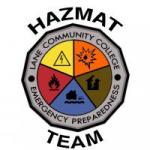SAFETY OFFICER (SOFR)

The SOFR is to develop and recommend measures to ensure personnel safety and occupational health of not only response workers, but also the public, and to anticipate, recognize, assess, and control hazardous and unsafe conditions or situations.
There is only one SOFR for each incident; however, the SOFR may have Assistance Safety Officers (ASOFs), or THSPs (Technical Specialists) as needed. ASOFs may be ordered or requested due to a specific skill set they possess, and which is required during incident response. An ASOF may come from the same organization as the SOFR or another organization. ASOFs may have responsibilities pertaining to specialized areas (e.g., air operations, occupational health, hazardous substances, salvage, diving, and sanitation). To accomplish all of these functions the SOFR and/or support staff should frequently travel to operational areas, base camps, staging areas, and other locations involving incident activity to identify health and safety hazards, and to verify compliance with applicable federal, state, and local health and safety regulations and with the Incident Health and Safety Plan (HASP). If there is a significant risk to public health or high likelihood of public evacuation, immediately contact the state or local EOC (Emergency Operations Center) for support regarding public health and request an ASOF for Public Health.
The major responsibilities of the SOFR are:
- Ensure an incident-specific HASP, required by 29 CFR 1910.120, is developed specifically for the incident response. The Site Safety and Health Plan (ICS 208-CG) is a tool designed to assist in meeting the requirements of a HASP under 29 CFR 1910.120.
- Participate in Tactics and Planning Meetings, and other meetings and briefings as required.
- Identify hazardous situations associated with the incident.
- Review the IAP for safety and occupational health implications.
- Provide safety and occupational health advice in the IAP for assigned responders.
- Use Risk Based Decision Making (RBDM) methodologies to conduct Operational Risk Management (ORM) for the incident.
- Develop and implement intervention measures to prevent unsafe acts.
- Stop observed or reported unsafe acts. (Seek guidance and clarity from the IC/UC on the scope and limitation of authority.)
- Investigate accidents that have occurred within the incident area and determine if new safety and occupational health measures are needed.
- Identify, communicate and document safety, occupational, and environmental health hazards, needs, and concerns.
- Track and report accidents, injuries, and illnesses.
- Support reporting of accidents and mishaps using the ICS 237-CG (Incident Mishap Reporting Record).
- Ensure all contractors and volunteers hired/brought in, meet and are aware of appropriate safety/health training levels, the HASP, and safety/health measures to achieve the response strategies. (A translator may be needed to achieve this goal.)
- Identify the need for and assign deputies, assistants, and THSPs as needed.
- Review and provide input to the Medical Plan (ICS 206-CG).
- Review and provide input to the traffic plan, if developed, for both land and vessel traffic.
- Develop the Incident Action Plan Safety Analysis (ICS 215a-CG) to document hazards as well as mitigation strategies.
- Serve as the IC/UC representative in meetings with federal, state, or local occupational safety and health authorities and stakeholders.
- Brief Command on safety and occupational health issues and concerns.
- Ensure that all required organization forms, reports, and documents are completed prior to demobilization.
- Have debriefing session with the IC prior to demobilization.
- Maintain Unit Log (ICS 214-CG) and forward to DOCL for disposition.
